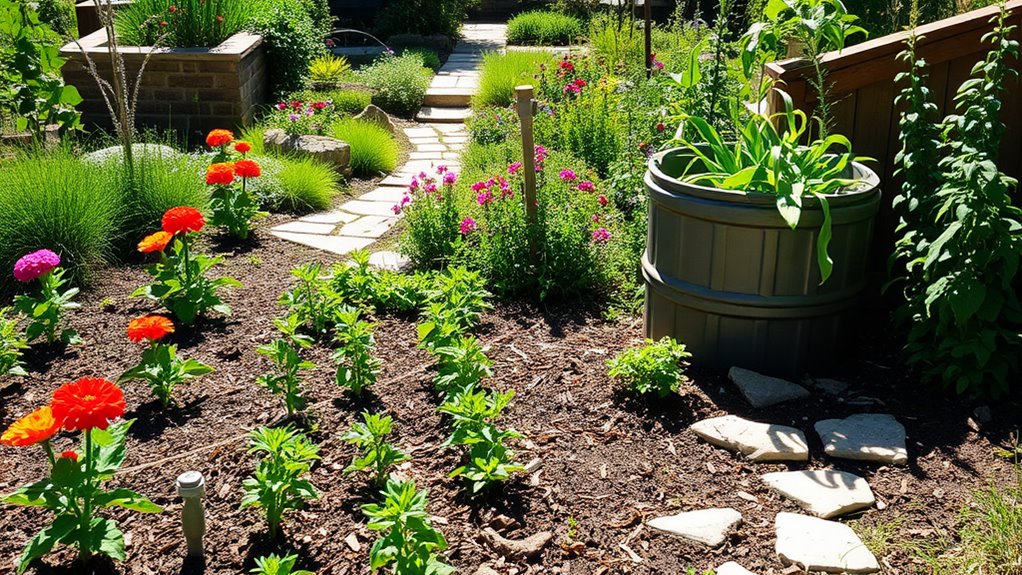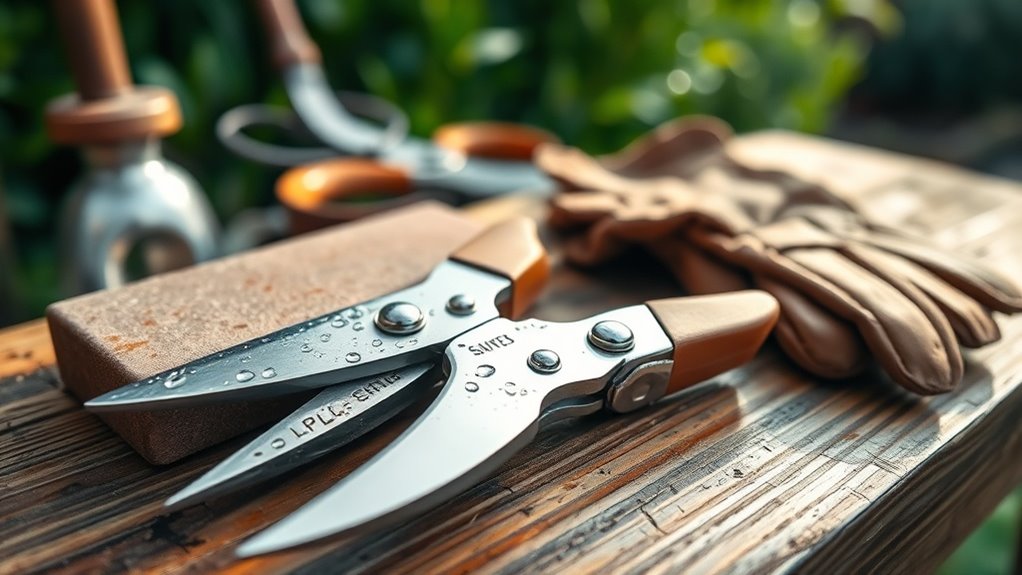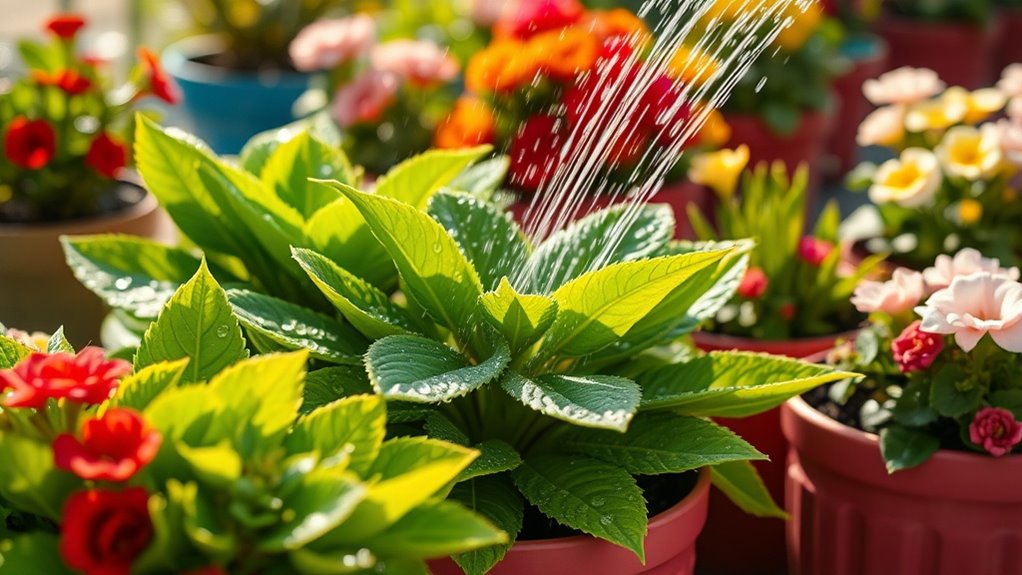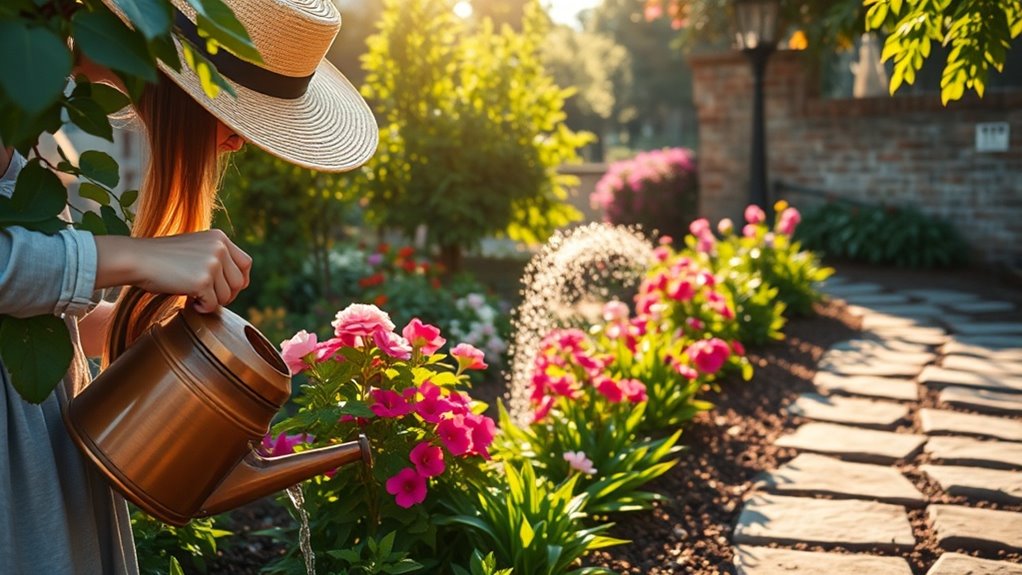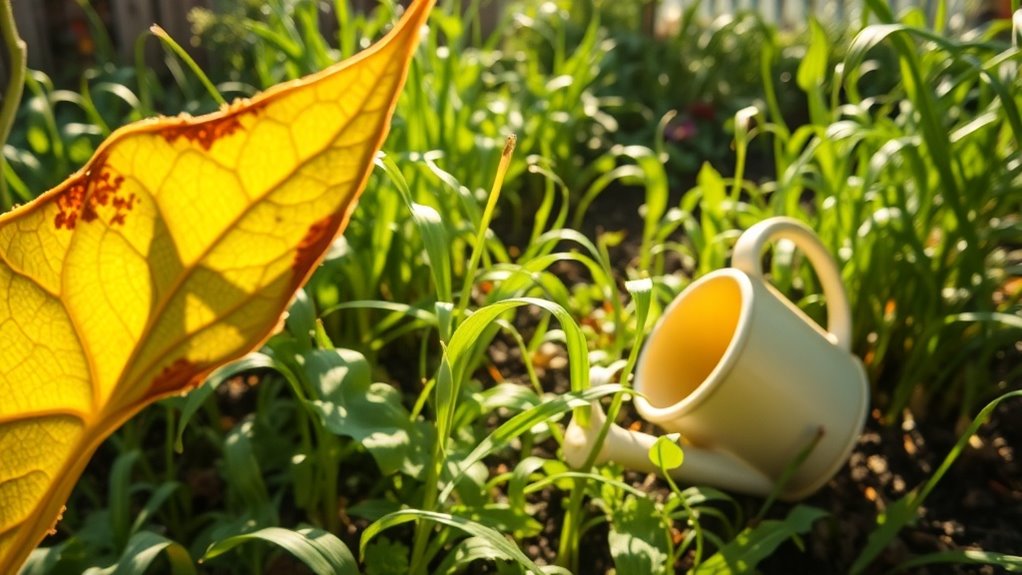Create a Low-Maintenance Routine That Keeps Your Garden Thriving
Many gardeners overlook the importance of selecting native plants, which can significantly reduce maintenance needs. By choosing the right species, you can create a vibrant garden that thrives with minimal effort. Implementing a smart watering system and utilizing mulch can further simplify your routine. Curious about how to integrate these strategies for a flourishing garden? Let’s explore the essential steps to ensure your garden flourishes with less work.
Key Takeaways
- Choose native and drought-resistant plants suited to your space’s sunlight, soil type, and climate for minimal care and maintenance.
- Implement a drip irrigation system to efficiently water plants at their roots while reducing water waste.
- Use organic mulch to suppress weeds, retain soil moisture, and enrich the soil as it decomposes.
- Schedule regular maintenance tasks, including weekly weeding and biweekly watering, to keep plants healthy with minimal effort.
- Prune and deadhead plants purposefully to promote growth and extend flowering while preventing disease.
Choose the Right Plants for Your Space
How do you decide which plants will thrive in your garden?
Start by assessing your space’s sunlight, soil type, and climate.
Choose native plants; they’re adapted to your environment and require less care.
For an easy garden routine, opt for drought-resistant varieties if water’s limited. Incorporating drought-tolerant veggies into your garden can significantly reduce the need for frequent watering.
Consider the size and growth habits of plants to prevent overcrowding.
Group plants with similar needs together to simplify maintenance.
Finally, think about seasonality; select a mix of perennials and annuals for year-round appeal.
With the right choices, you’ll create a beautiful, low-maintenance garden that thrives with minimal effort.
Implement a Smart Watering System
To keep your garden thriving with minimal effort, consider choosing efficient irrigation methods like drip systems or soaker hoses. These options deliver water directly to the roots, reducing waste and ensuring your plants stay hydrated. Don’t forget to schedule regular watering times, which helps establish a routine and makes maintenance even easier. Additionally, understanding ideal watering schedules can help you optimize your garden’s health and productivity.
Choose Efficient Irrigation Methods
Efficient irrigation methods are essential for maintaining a low-maintenance garden, and implementing a smart watering system can make a significant difference.
Consider using drip irrigation, which delivers water directly to the roots, minimizing waste and reducing evaporation.
Installing a rain barrel can also capture rainwater, providing an eco-friendly water source.
If you prefer flexibility, a soaker hose allows for even moisture distribution over time.
Additionally, smart controllers can adjust watering schedules based on weather conditions, ensuring your plants get just the right amount of water.
Schedule Regular Watering Times
Establishing a consistent watering schedule is crucial for maintaining a healthy garden while minimizing upkeep.
Consider implementing a smart watering system that automates this process.
Use a timer to set specific watering times, adjusting for factors like plant types and local climate.
Early mornings or late evenings are ideal to reduce evaporation.
Monitor soil moisture and tweak your schedule as needed, ensuring your plants receive adequate hydration without overwatering.
This approach not only conserves water but also frees up your time, allowing you to focus on other gardening tasks.
Regularly check your system for issues to keep everything running smoothly.
Use Mulch to Suppress Weeds
Using mulch in your garden is a simple yet effective way to suppress weeds and retain soil moisture.
Not only does it save you time on weeding, but it also provides benefits like regulating soil temperature and enriching the soil as it breaks down.
You’ll find various types of mulch, from organic options like wood chips and straw to inorganic choices like gravel, each offering unique advantages for your garden. Additionally, using mulch can significantly contribute to water conservation strategies by reducing evaporation and maintaining soil moisture levels.
Benefits of Mulching
Mulching offers numerous benefits for your garden, especially when it comes to suppressing pesky weeds. By applying a layer of mulch, you create a barrier that blocks sunlight, preventing weed seeds from germinating. This means less time spent pulling weeds and more time enjoying your garden.
Additionally, mulch helps retain soil moisture, reducing the need for frequent watering. It also regulates soil temperature, protecting plant roots from extreme heat or cold.
Plus, as organic mulch breaks down, it enriches the soil with nutrients. Overall, mulching is an effective strategy to keep your garden healthy and thriving with minimal effort.
Types of Mulch
When selecting the right type of mulch for your garden, you’ll find that various options can effectively suppress weeds.
Each type has its own benefits, so consider the following:
- Organic Mulch: Made from materials like bark, straw, or leaves, it enriches the soil as it decomposes.
- Inorganic Mulch: Options like rubber or gravel don’t break down, offering long-lasting weed suppression without adding nutrients.
- Landscape Fabric: This barrier allows water and nutrients through while blocking sunlight, preventing weed growth.
Choose the mulch that best suits your garden’s needs, and watch your weed problems diminish significantly!
Prune and Deadhead With Purpose
Pruning and deadheading your plants not only enhances their appearance but also promotes healthier growth.
Focus on removing spent flowers and any dead or damaged leaves.
This encourages new blooms and prevents disease.
Use sharp, clean tools to make precise cuts, promoting quicker healing.
For shrubs, prune in early spring before new growth begins, targeting any crossing branches.
In perennials, deadhead regularly to extend their flowering season.
Take a moment to assess each plant’s needs, as some may require more attention than others. Incorporating a 5-minute daily routine for garden maintenance can significantly reduce the time and effort needed to keep your space thriving.
Schedule Regular Maintenance Tasks
Establishing a regular maintenance schedule is essential for keeping your garden thriving with minimal effort.
By planning your tasks, you’ll ensure your plants stay healthy without overwhelming yourself.
Here are three key tasks to include:
- Weekly Weeding: Spend a few minutes each week removing weeds to prevent them from taking over.
- Biweekly Watering: Adjust your watering schedule based on the season, ensuring plants get adequate moisture.
- Monthly Fertilizing: Apply a balanced fertilizer once a month to sustain soil nutrients.
Incorporating a simple routine for garden maintenance can further enhance your gardening efficiency. Stick to this routine, and you’ll enjoy a flourishing garden with less stress!
Embrace Companion Planting Techniques
Companion planting offers a strategic way to enhance your garden’s productivity while minimizing pest issues.
By pairing compatible plants, you can create a natural ecosystem that supports growth.
For instance, plant tomatoes alongside basil to improve flavor and deter pests.
Marigolds, with their pest-repelling properties, can benefit almost any crop.
Consider the layout of your garden; tall plants can provide shade for shorter ones.
Additionally, legumes fix nitrogen in the soil, enriching it for neighboring plants.
Experiment with combinations and observe what works best for you.
Embracing these techniques will lead to a thriving, low-maintenance garden.
Moreover, companion planting techniques can also help in attracting beneficial insects that further promote plant health.

